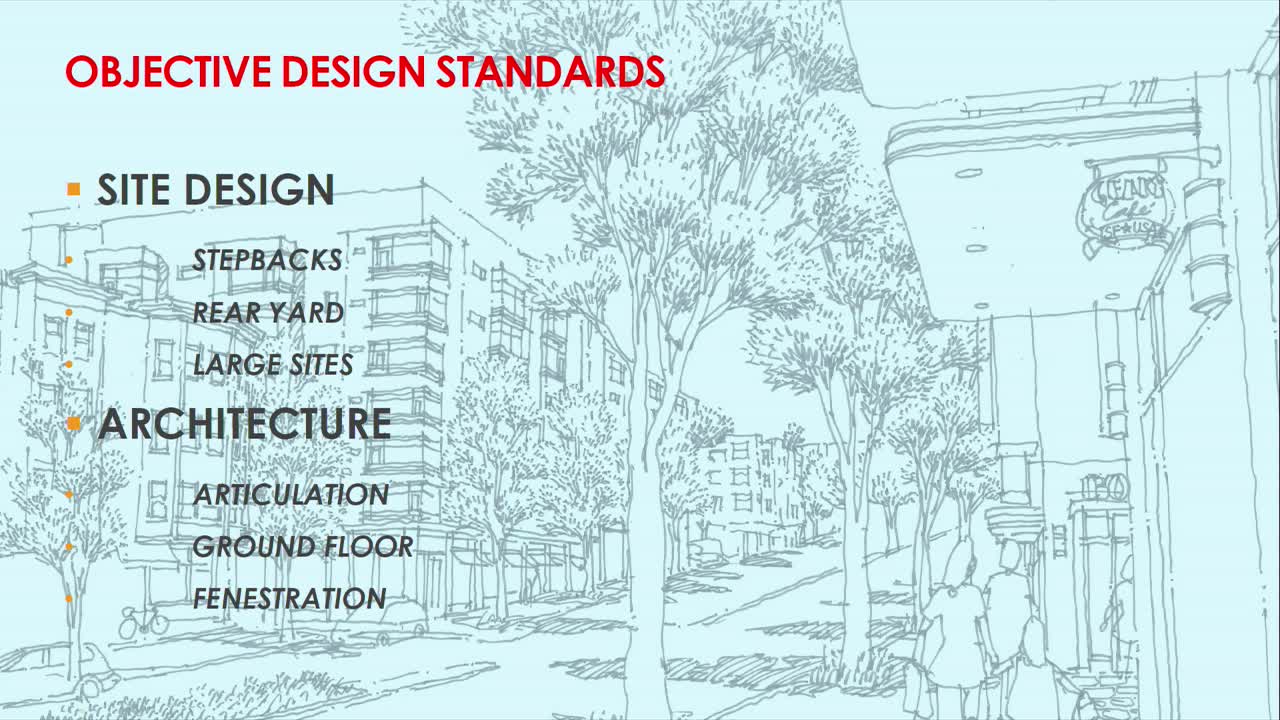City develops new design standards for buildings along major corridors
November 30, 2023 | San Francisco City, San Francisco County, California
This article was created by AI summarizing key points discussed. AI makes mistakes, so for full details and context, please refer to the video of the full meeting. Please report any errors so we can fix them. Report an error »

The San Francisco City Council is moving forward with new design standards aimed at shaping the future of urban development in the city. During a recent meeting, officials discussed proposed guidelines that will primarily affect buildings ranging from 65 to 85 feet tall along key corridors. These standards are set to replace existing urban design guidelines and will streamline the approval process for developers, allowing for ministerial approval of projects once the new regulations are adopted.
The initiative is part of a broader effort to enhance community engagement, with city officials emphasizing the importance of stakeholder outreach. A workshop has already been held to gather feedback from project sponsors, and further consultations are planned to ensure that the new standards are practical and beneficial for both developers and residents.
Key aspects of the proposed standards include a focus on site design and architectural elements. The guidelines aim to create a dynamic streetscape by allowing taller buildings while maintaining a respectful relationship with existing neighborhoods. This includes considerations for building massing, setbacks, and modulation to reduce the impact on neighboring properties. The city is also looking to address common requests for waivers related to rear yard requirements, which have been a significant concern for developers.
In addition to site design, the architectural standards will emphasize the importance of facade articulation to enhance the visual appeal of buildings. This includes features such as bay windows, balconies, and textured facades that contribute to a rich urban environment. Ground floor design will also be prioritized to ensure that buildings engage positively with pedestrians, avoiding blank walls and promoting active storefronts.
As the city continues to refine these objective design standards, officials are committed to incorporating public feedback and ensuring that the guidelines align with community needs. The next steps involve drafting the standards for adoption, with further stakeholder meetings planned to finalize the details. This initiative represents a significant step towards modernizing San Francisco's urban landscape while balancing development with the preservation of neighborhood character.
The initiative is part of a broader effort to enhance community engagement, with city officials emphasizing the importance of stakeholder outreach. A workshop has already been held to gather feedback from project sponsors, and further consultations are planned to ensure that the new standards are practical and beneficial for both developers and residents.
Key aspects of the proposed standards include a focus on site design and architectural elements. The guidelines aim to create a dynamic streetscape by allowing taller buildings while maintaining a respectful relationship with existing neighborhoods. This includes considerations for building massing, setbacks, and modulation to reduce the impact on neighboring properties. The city is also looking to address common requests for waivers related to rear yard requirements, which have been a significant concern for developers.
In addition to site design, the architectural standards will emphasize the importance of facade articulation to enhance the visual appeal of buildings. This includes features such as bay windows, balconies, and textured facades that contribute to a rich urban environment. Ground floor design will also be prioritized to ensure that buildings engage positively with pedestrians, avoiding blank walls and promoting active storefronts.
As the city continues to refine these objective design standards, officials are committed to incorporating public feedback and ensuring that the guidelines align with community needs. The next steps involve drafting the standards for adoption, with further stakeholder meetings planned to finalize the details. This initiative represents a significant step towards modernizing San Francisco's urban landscape while balancing development with the preservation of neighborhood character.
View the Full Meeting & All Its Details
This article offers just a summary. Unlock complete video, transcripts, and insights as a Founder Member.
✓
Watch full, unedited meeting videos
✓
Search every word spoken in unlimited transcripts
✓
AI summaries & real-time alerts (all government levels)
✓
Permanent access to expanding government content
30-day money-back guarantee

